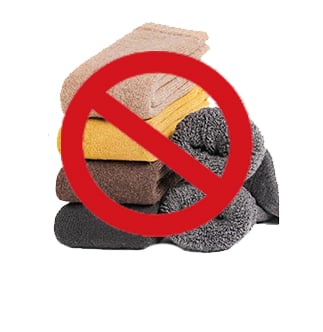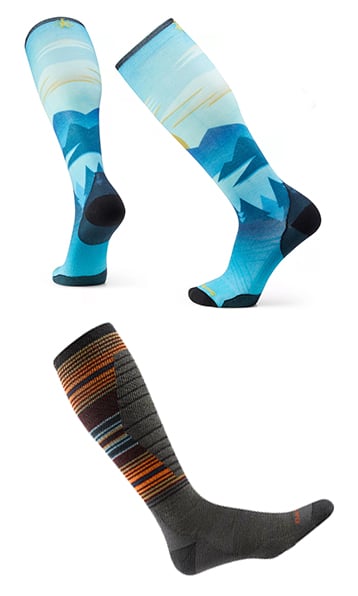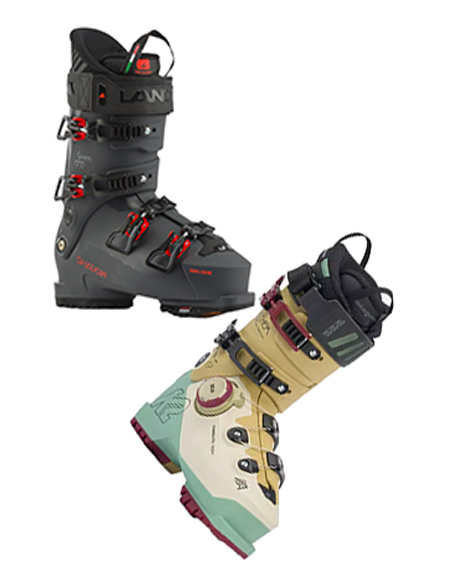Thick Sock . Thin sock . Warm Boot . Cold Boot
 It's a mystery! What makes a ski boot comfortable, warm, and an extension of your foot? Let's give you some answers.
It's a mystery! What makes a ski boot comfortable, warm, and an extension of your foot? Let's give you some answers.
1. Thick Ski Sock or Thin Ski Sock? Maybe you're thinking of wearing a thick wool sock inside your ski boot. After all, wool is warm even when it gets damp. It might seem reasonable that bundling a foot in a thick, dense sock will insulate your foot from the cold. But here's the deal: all that padding between your foot and your ski boot will affect your boot's performance, but not in a good way. Your ski boots should, not to sound ZEN-like, be one with your feet. You and your ski boots should react and travel through the snow in unison. Too much bulk around your feet will hamper feel and control. Added bulk will make your ski boots feel and respond like you're skiing with cement blocks around your feet and leg shafts. If skiing with blocks on your feet improved performance, it only stands to reason that ski boot manufacturers would use cement instead of plastic.
A quality thin ski sock will add warmth without the bulk. Your feet will be close to the boot. When your feet are close to your ski boot, you will experience that "ZEN-like" oneness with your boots and skis.

There are those that have skinny legs—people like Overall World Cup Champion, Tamara McKinney, thin calves and muscular thighs. Sorry boys, our own Gunner Wolf and Darren Padgett, are built the same way: skinny calves and muscular thighs—all strong skiers, especially the World Cup skier. This group chooses to wear a targeted light cushion ski sock. Mind you, not for warmth but to give them a better fit ( that ZEN thing again).
These days, ski boot manufacturers offer low-volume, medium-volume, and high-volume fits in most performance boots. There is no need to bulk up inside the ski boot. Our first message is to buy the proper ski boots. One suited to your skiing ability and one that best fits your foot. From there, our boot fitters will fine-tune your boot's fit and performance.

1. What Makes a Ski Boot Warm? The insulation dummy! Today's ski boot liners are constructed with modern materials, like Thinsulate. Yep, the same stuff used in your favorite insulator that keeps your torso warm. You get warmth from your ski boots, not your ski socks. WOW! Mind-blowing!
Back in the old days, I remember cutting into a boot liner and was shocked to find that carpet padding was the source used for insulation. Ski boot technology has come a long way.
There's one more critical factor ensuring warmth. FIT! If a ski boot is too tight, it will cut off circulation, and guess what? You'll have cold tootsies.
Oops! A couple more things to mention. Start your ski day with warm boots, not a pair left in the car all night. Take them indoors and place them next to a heating vent (NOT ON the vent). On the vent, they will melt. We've seen that more than once, and it's not pretty! At the end of your ski day, undo the buckles and open up your ski boots to allow them to dry out. Now, you're starting your ski day with warm, dry, well-fitting ski boots.
But wait, there's MORE! If you're heading to Wyoming, Canada, Alaska, or the Arctic (scratch that last place), consider purchasing ski boot heaters. They are fantastic when skiing in negative or single-digit temps.